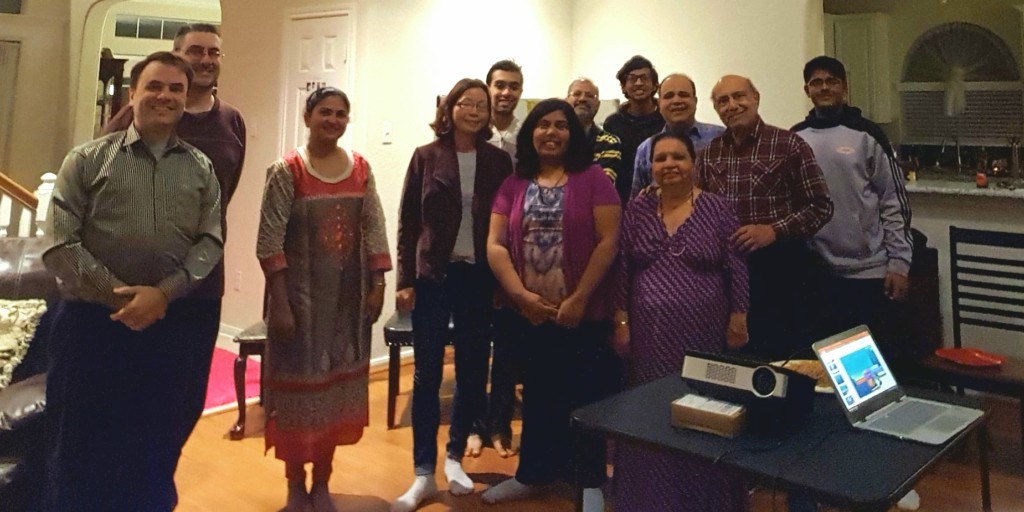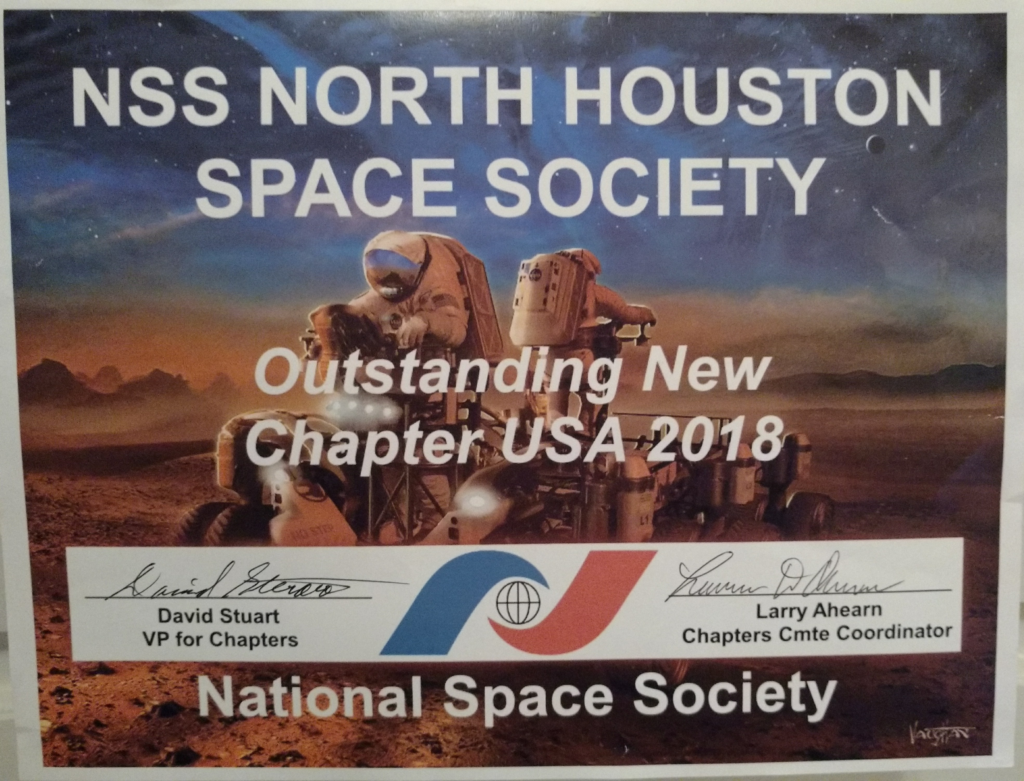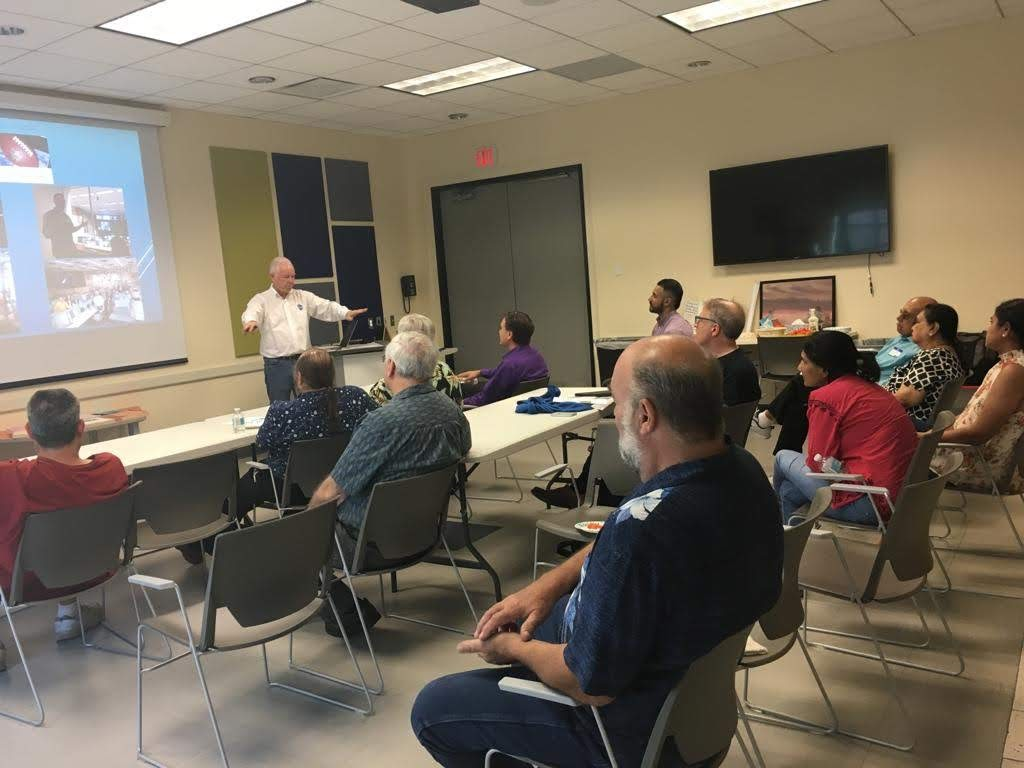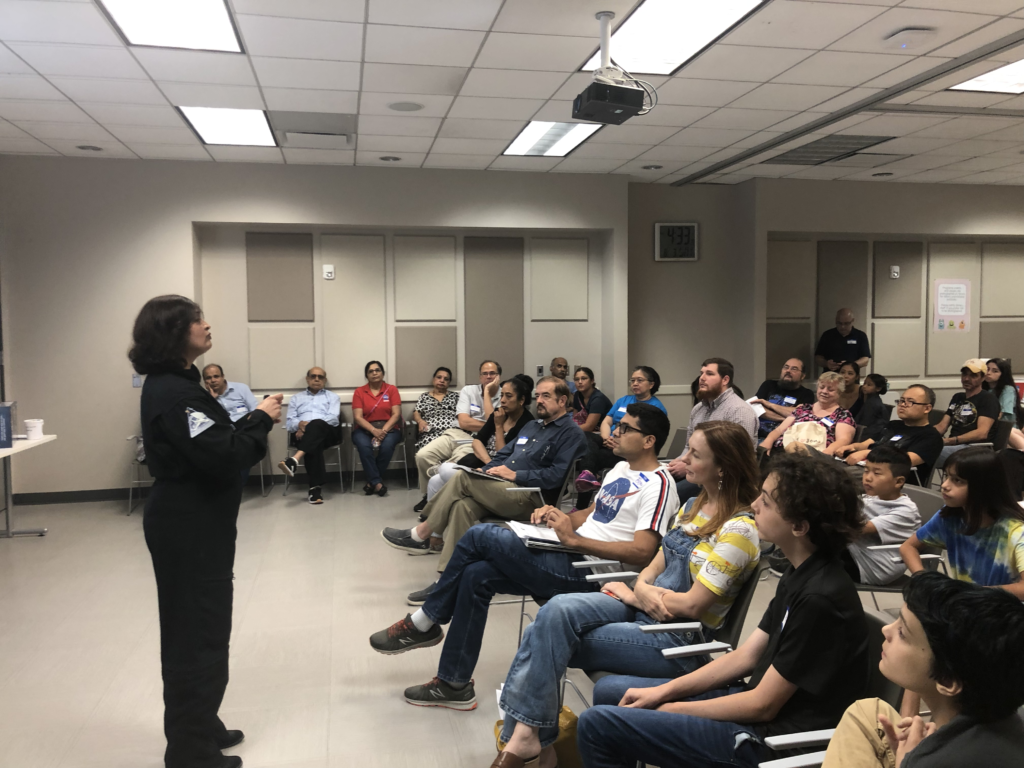The July 13, 2024 meeting has ben CANCELLED because of the hurricane recovery. See you in August!
Join us for our Monthly NSS North Houston Space Society (http://NorthHoustonSpace.org) meeting.
This will be a hybrid meeting. Come in person at Barbara Bush Library (6817 Cypresswood Drive, Spring, TX 77379) or join us online using Google Meet: https://meet.google.com/qqi-kovh-cfv
The meeting will be on Saturday, August 10, 2024 at 2PM (US Central Time).
2:00 PM – Opening Remarks – Nathan Price
2:05 PM – Latest in Space Weather – Patricia Vlach
2:15 PM – Space News – Khooshboo Dani
3:00 PM – Venturing into a Cosmic Career: My Exciting Journey into NASA’s Beyond Earth Contracting – Rasha Shreim
4:00 PM – End of Meeting at the Library
(as soon as we can get there)
5:00 PM – Informal get together at PJ’s Coffee near the library
Venturing into a Cosmic Career: My Exciting Journey into NASA’s Beyond Earth Contracting
Join us on a captivating career journey as we delve into the thrilling career trajectory of a NASA contract specialist. We will explore the challenges, triumphs, and invaluable experiences encountered along the way, offering insights into the dynamic world of space procurement and beyond. Through this presentation, gain a deeper understanding of the intricate processes and unique opportunities that define breaking into this exhilarating career path within one of the world’s most renowned space agencies, NASA.
About our Featured Speaker: Rasha Shreim

Rasha’s professional journey extends across a diverse landscape of supporting space exploration and procurement expertise. Presently, she serves on the ISS team within the International Space Station and Low Earth Orbit Procurement Office, contributing to the forefront of space advancements. Prior to her current role, Rasha dedicated her efforts to supporting the Artemis program. This high-profile program supports the first woman and the first person of color to go to the moon; Rasha specifically worked on the Orion crew module program within the Exploration Systems Procurement Office.

Her expansive career also includes pivotal roles within NASA’s Projects Procurement Office, demonstrating her versatility within the agency. Rasha’s NASA tenure extends beyond administrative boundaries, as she has undergone rotations at esteemed NASA centers such as Armstrong Flight Research Center, Wallops Flight Facility, White Sands Test Facility, and Johnson Space Center, enriching her understanding of aerospace operations. Before her time at NASA, Rasha honed her skills as a contractor for the US Air Force, specializing in the complex domain of medical billing and coding. Her professional repertoire extends further into the private sector, where she amassed valuable experience within the technology and healthcare industries.

Outside of work, Rasha’s passions reflect her admiration for exploration and innovation. She finds joy and exhilaration in activities such as jet skiing and horseback riding and is deeply fascinated with space, astronomy, and American engineering, particularly spaceships and high-performance vehicles.
About the Meeting
Meetings are open to all age groups and interest levels. Come explore with us the potential that developing and exploring space has to better life here on earth and to open up new frontiers creating new perspectives that can help enrich the human experience.
The Vision of NSS is people living and working in thriving communities beyond the Earth, and the use of the vast resources of space for the dramatic betterment of humanity.
The Mission of NSS is to promote social, economic, technological, and political change in order to expand civilization beyond Earth, to settle space and to use the resulting resources to build a hopeful and prosperous future for humanity. Accordingly, we support steps toward this goal, including human spaceflight, commercial space development, space exploration, space applications, space resource utilization, robotic precursors, defense against asteroids, relevant science, and space settlement oriented education.
Website: http://NorthHoustonSpace.org
Facebook: https://www.facebook.com/NssNorthHoustonSpaceSociety/
LinkedIn: https://www.linkedin.com/company/nss-north-houston-space-society/
About Us
NSS North Houston Space Society is a chapter of the National Space Society (NSS) and is governed by the chapter bylaws. Our vision is “People living and working in thriving communities beyond the Earth, and the use of the vast resources of space for the dramatic betterment of humanity.” If you share this vision, please join us. (If you have any questions or comments, please reach out to our chapter president Nathan Price by email at Nathan.Price@gmail.com or phone 832-620-6385.
We are working to achieve this vision through our monthly meetings where we seek to educate the community about the potential of space, the current activities going on to achieve the promise of space, and to inspire people of all ages. Our meetings are usually the second Saturday of each month at 2 PM at the Barbara Bush Library.
NSS North Houston Space Society had its first meeting in January 2018 at the home of Nathan Price who serves as the chapter president. The chapter has had meetings every month since then except one.

In 2018, our chapter was recognized as the “Outstanding New Chapter USA 2018”.


Over the months our meeting attendance has fluctuated, but generally it has grown.

Starting with our May 2019 meeting, we moved to the Barbara Bush Library which has given us a room with the capacity for 70 people.


We have had engineers, scientists, space lawyers, space investors, visionaries, entrepreneurs, and others speak at our meetings discussing all aspects of space.
Our group includes people from a wide variety of fields including engineers, programmers, scientists, writers, and people in all sorts of fields. It is a friendly, welcoming group. And we look forward to seeing you at our next meeting.